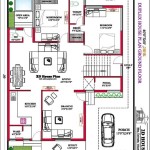Drop Down Fish House Trailer Plans
Fish house trailers offer anglers mobile and comfortable shelters for ice fishing or open-water angling. A drop-down fish house trailer, in particular, provides a unique advantage: a lowered profile during travel for improved fuel economy and easier towing, then expands at the fishing location for increased headroom and living space. Building a drop-down fish house trailer from plans can be a rewarding project for those with some construction experience, allowing customization and cost savings compared to buying a pre-built unit. This article will explore the key considerations when selecting and utilizing drop-down fish house trailer plans.
One of the first steps in the process is selecting the right set of plans. Numerous resources offer plans for drop-down fish house trailers, ranging from free online resources to detailed plans purchased from reputable designers. Careful consideration should be given to the level of detail provided in the plans, the complexity of the design, and the overall dimensions of the finished trailer. The skill level of the builder should align with the complexity of the chosen plan.
The plans should clearly outline the materials required for construction. Common materials include lumber for framing, plywood for sheathing, insulation for temperature control, and metal roofing for durability. The specific type and quantity of materials will depend on the design and size of the trailer. It's essential to carefully review the materials list and source high-quality materials suitable for the intended environment. The plans may offer suggested materials, but builders can often substitute based on availability, budget, and personal preferences, though substitutions should be made with careful consideration of structural integrity and intended use.
A crucial element in drop-down fish house trailers is the lifting mechanism. Several different systems can be employed, including hydraulic jacks, electric winches, or even manual crank systems. The choice of lifting mechanism will impact the ease of raising and lowering the roof, the overall cost of the project, and the maintenance requirements. The plans should detail the chosen lifting mechanism and provide clear instructions for its installation and operation. Understanding the mechanics of the lifting system is critical for ensuring safe and reliable operation.
Insulation plays a vital role in maintaining comfortable temperatures inside the fish house, especially during colder months. The plans should specify the recommended type and thickness of insulation for walls, floors, and the roof. Common insulation materials include fiberglass batts, rigid foam boards, and spray foam insulation. The chosen insulation should be suitable for the climate and provide adequate thermal resistance. Properly sealing any gaps or cracks will further enhance the insulation's effectiveness and prevent drafts.
Interior layout and features are key aspects to consider when choosing and implementing plans. The desired amenities, such as sleeping quarters, cooking facilities, and storage space, will dictate the necessary floor plan and interior design. The plans should provide detailed drawings and dimensions for the interior layout, allowing builders to customize the space to their specific needs. Careful planning of the interior layout can optimize space utilization and ensure a functional and comfortable environment.
Electrical systems are essential for powering lights, appliances, and other electronics within the fish house. The plans should include a wiring diagram and specifications for the electrical system. This includes considerations for the power source, whether it be a generator, shore power connection, or battery system. Proper wiring and grounding are critical for safety and should be performed in accordance with local electrical codes.
Plumbing systems may also be incorporated into the fish house design, depending on the desired amenities. This could include a sink, shower, or even a toilet. The plans should detail the plumbing layout, including water supply and waste disposal systems. If incorporating plumbing, it's crucial to select appropriate materials and ensure proper installation to prevent leaks and other issues.
Exterior finishing is another important aspect to consider. The plans should specify the recommended exterior materials, such as siding, roofing, and trim. Choosing durable and weather-resistant materials will protect the fish house from the elements and extend its lifespan. The exterior finish can also be customized to suit personal preferences and blend in with the surrounding environment.
Trailers require specific considerations for registration and legality. Regulations regarding trailer dimensions, weight limits, and lighting requirements vary by jurisdiction. Builders should research local regulations and ensure their finished trailer complies with all applicable laws. Proper registration and licensing are essential for legal and safe operation on public roads.
Safety should be a paramount concern throughout the entire construction process. Following proper construction techniques, using appropriate safety equipment, and adhering to all relevant safety guidelines are crucial for preventing accidents and injuries. Regular maintenance and inspections of the finished trailer are also essential for ensuring its continued safe operation.

Resultado De Imagen Hydraulic Fish House Frame Plans Trailer Diy Ice Fishing

Fish House Plans And Building Supplies The Only On Internet To Build Your Own Ice Fishing Materials Gear

See What Our Plans Will Build You Fish House And Building Supplies Ice Fishing Castle

Fish House Frames Miltona Blacksmith

Drop Down Ice Fish House Frame Fishing Equipment

Fish House Ice Fishing S

Fish House Frames Miltona Blacksmith

Build Your Own Fish House Plans And Building Supplies

Fish House Axle Plans Minnesota Fishing Reports Drop Down Frame Build Questions Trailer Axles Ice

34 Ice Fishing House Ideas Fish








